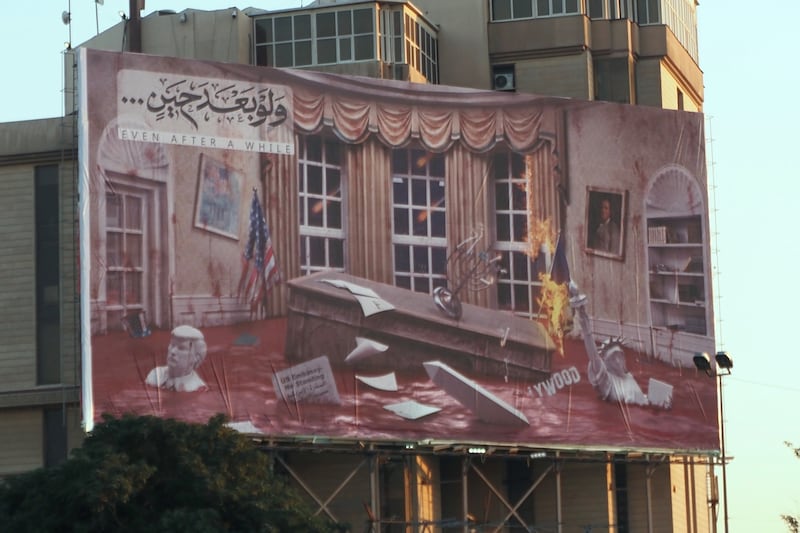Walking through Baghdad, you could easily be forgiven for thinking Iraqis are hell-bent on wreaking vengeance on the United States. At least, that was the message conveyed by the hanging of a cardboard cut-out of former president Donald Trump on Tahrir Square.
The event was staged by the Hashd al-Shaabi, a motley crew of Iran-backed Shia militias who hold great sway over Iraq. Its militants were gearing up for the three-year anniversary (on January 3rd) of the Trump administration’s assassination of top Iranian general Qasem Soleimani and Hashd commander Abu Mahdi al-Muhandis.
Iran is omnipresent, it seems. Judging by the hanging, it wants revenge on a scale similar to Trump’s lethal drone attack – and, its proxies would claim, so does the Iraqi public. Only, talking to people in the street, a parallel, more convincing reality emerges, one in which the majority just want to get on with their lives, preferably with a reliable supply of clean water and electricity.
Observing punters posing for photos in front of the dangling Trump, Amir, a 55-year-old bystander, could barely contain his contempt. “Look at these people. If they got the chance to go to America, they would go fast,” he said. “Iran is the real enemy. They did nothing for the Iraqi people. The only reason they came here is because they wanted our money.”
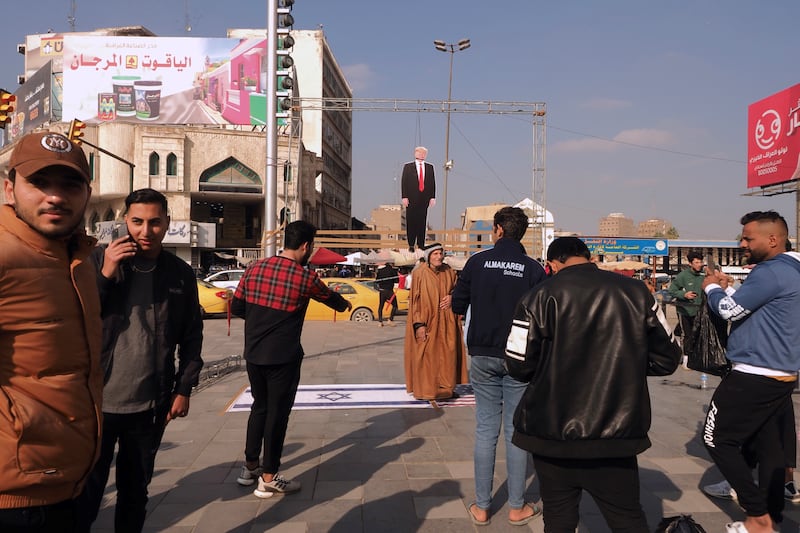
Filthy lucre certainly figures among the many reasons why Iran, a Shia nation, got involved in this Shia-majority country. Iraq is a captive market for Iranian products – food, machinery, gas, you name it – traded above and below board for much-needed US dollars. And it has also served as a gateway to the rest of the region, part of Iran’s Shia crescent project, a sphere of influence extending from Tehran to the Mediterranean.
The militias have been instrumental in all this. Some date back to Saddam Hussein’s dictatorship, when Iraq’s oppressed Shia sought protection from Iran. Others were formed after the US invasion of Iraq, launching lethal attacks on US-led coalition troops with Iran’s sophisticated explosives. Most emerged in 2014, when Islamic State (also known as Isis) reared its head. Crucially, it was Iran that funded, armed and trained the militias to fight the terror group long after the premature withdrawal of the US from Iraq in 2011, a move that legitimised its presence in the country.
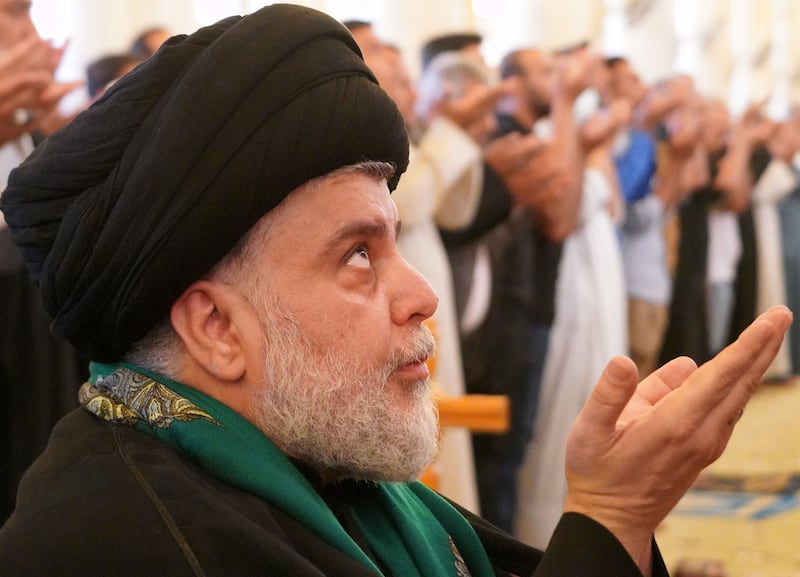
Today, the Hashd’s masters and backers control parliament, their tentacles reaching deep into a system oiled by brazen corruption. If there’s a master plan, it’s not immediately obvious in the cauldron of Iraqi politics. United in the so-called Co-ordination Framework, the pro-Iran Shia parties are a discordant lot whose idea of a common vision seems to be keeping populist Shia cleric Muqtada al-Sadr out of politics.
Sadr, who bolts to the Iranian holy city of Qom when the going gets tough, is not free of Iranian influence. But, positioning himself as an Iraqi nationalist, his Sairoon alliance came out tops in the 2021 parliamentary election. Having failed to form a ruling coalition with Sunni and Kurdish blocs, the cleric withdrew his 73 representatives from parliament, leaving the Co-ordination Framework to rule the roost. But he remains a threat to the pro-Iran constellation, able to summon his faithful on to the streets with a click of the fingers, as he ably demonstrated last summer, storming parliament, and clashing with rival militias in a bloody battle that left dozens dead.
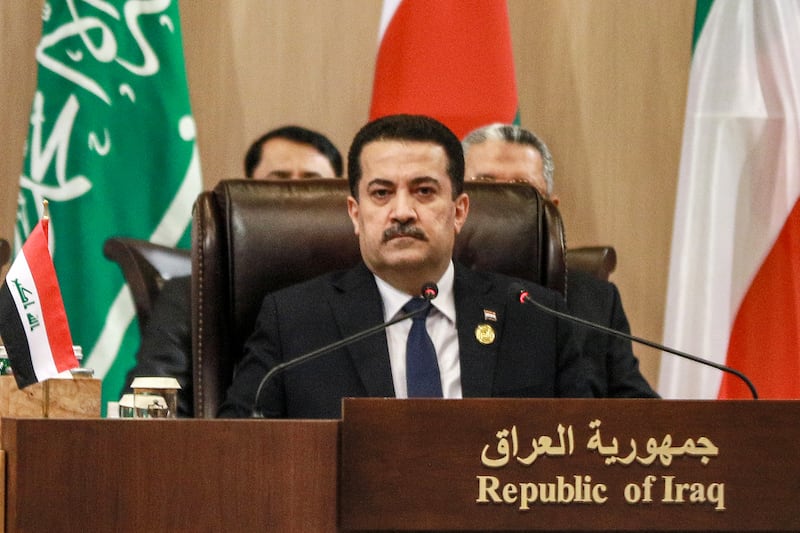
After more than a year of deadlock, the Co-ordination Framework manoeuvred its choice of prime minister into the driving seat last October. Mohamed Shia al-Sudani was at first presumed to be Iran’s man. But he’s struck a more pragmatic note than expected, discussing gas exports with Germany and approving the continued presence of about 2,000 US troops in the country.
It’s a stance unlikely to find favour with Iran’s most prominent allies in the Co-ordination Framework, including rum figures such as Qais Khazali, leader of Asa’ib Ahl al-Haq, one of the country’s most lethal militias. Trained by Iran’s Islamic Revolutionary Guard Corps (IRGC), it ran sectarian death squads in the chaos that followed the US invasion, torturing and killing countless Sunnis. More recently, it was designated as a terror group by the US, accused of killing anti-government protesters in 2019.
Sudani’s divergence from his backers indicates that Iran, grappling with protests and a collapsing economy at home, is not the puppet master it appears to be. It could be argued it never was all-powerful. “Iran’s power in Iraq ebbs and flows,” says Toby Dodge, a professor at the London School of Economics. “They have a long-term plan. Their demands change. It’s a fluid relationship being negotiated all the time.”
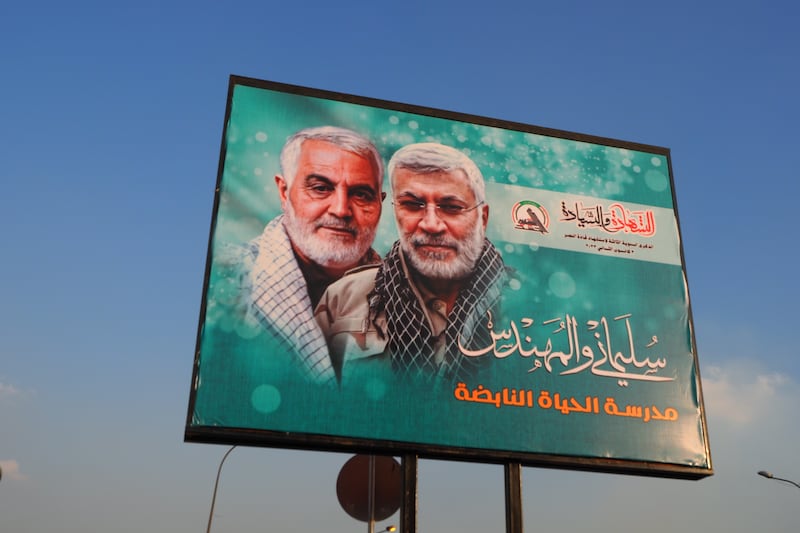
Still, the killing of Soleimani, a man whose power was second only to Ayatollah Khamenei, struck a big blow to Iran’s influence. It has been said that Soleimani, mastermind of Iran’s expansion throughout the Middle East, could drive from Tehran to Lebanon’s border with Israel without being stopped.
By contrast, when his successor, Esmail Ghaani, first visited Iraq’s militias in Baghdad in 2020, he had to apply for a visa – a clear indication that then-prime minister Mustafa al-Kadhimi was intent on keeping him at arm’s length.
Ghaani, who cut his teeth in Afghanistan and does not speak Arabic, struggled to impose his will on the militias. To make matters worse, the assembled hardmen were unimpressed when he turned up with a box of silver rings, rather than the wads of cash they had come to expect.
The killing of Muhandis, founder of the Kata’ib Hezbollah militia, another US-designated terror group, was also consequential. He had been in the throes of bringing the unruly militias under a centralised command structure, turning it into a sort of Iraqi IRGC.
With no central figure to rally around, the militias have been caught up in local rivalries, pursuing their own agendas, which include firing rockets at US troops. In 2021, Ghaani actually told them to stop, but his pleas for calm fell on deaf ears.
[ Lorraine Mallinder: Undaunted young Iraqis yearn for changeOpens in new window ]
With backers embedded in key ministries and their own stockpiles of arms, the militias may be outgrowing their role as Iran’s instruments of power. These days, they receive funding from local sources – not least the Iraqi government, which integrated them into state security forces in 2018. But legitimacy has not curbed their lawlessness.
Muhandis was Tehran’s man in Iraq, who had fought with the IRGC against Saddam Hussein. With his death, Iran lost one of its main keys to the country. And while there is no shortage of candidates ready to take his place, creating a new Iraqi leader could backfire if interests clash. This creates a dilemma for Iran, which needs coherence, but does not want strong leaders to emerge in Iraq.
In a 2019 study, the US army admitted that Iran was the only victor in the $2 trillion Iraq war. But, like the US before it, its time may soon be up. The 2019 anti-government protests, which saw young Iraqis shouting “Iran barra barra” (Iran out) sent a clear message. In their eyes, the Shia parties and militias doing Tehran’s bidding are responsible for the corruption, high unemployment and poor services that are holding the country back.
“These militia guys like Qais Khazali are mercenaries,” says Ali (36), who was in the thick of the protests. “They need to stop running to Iran whenever there’s trouble. They will go wherever the money is.
“They will become Iraqi if it suits their interests.”
